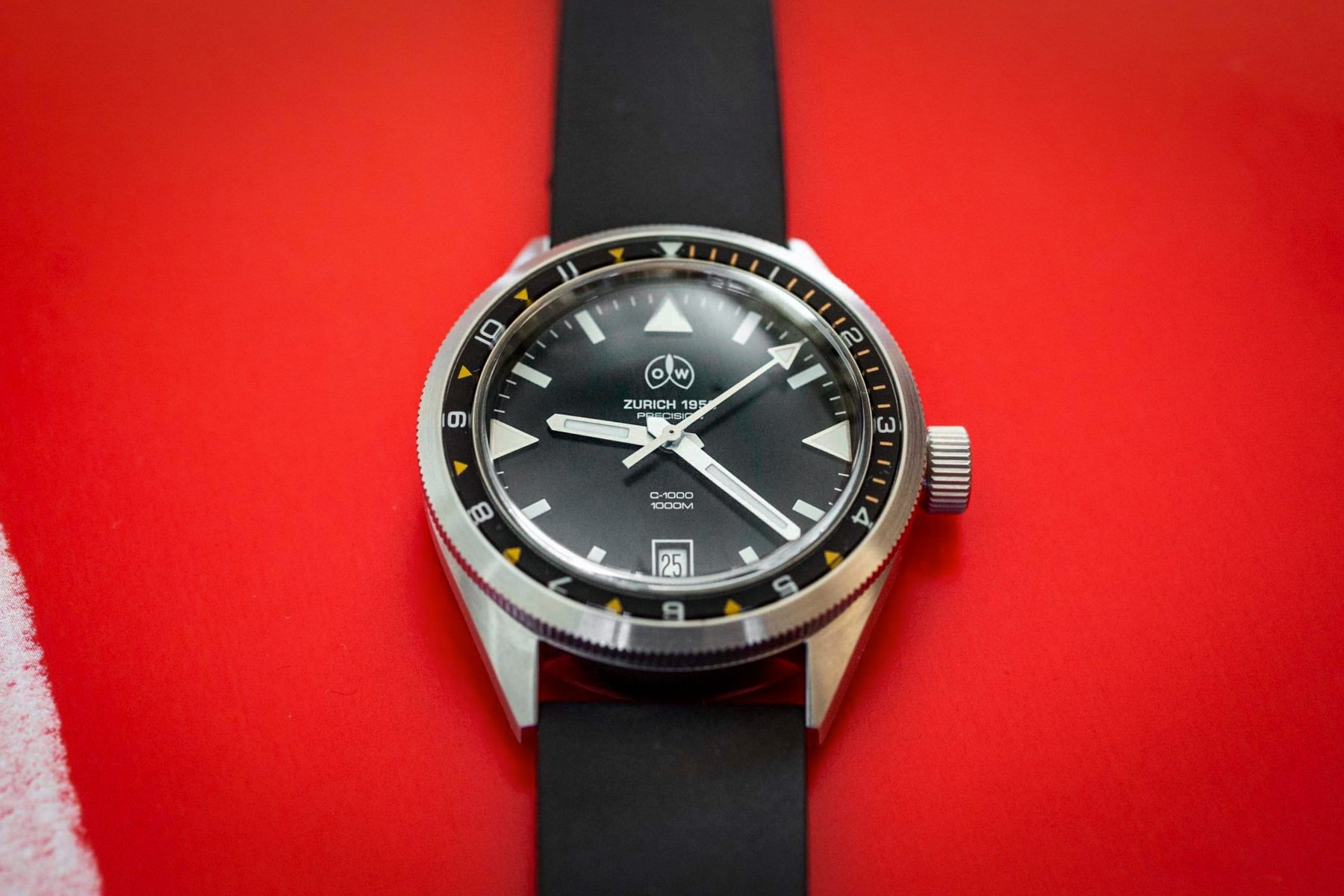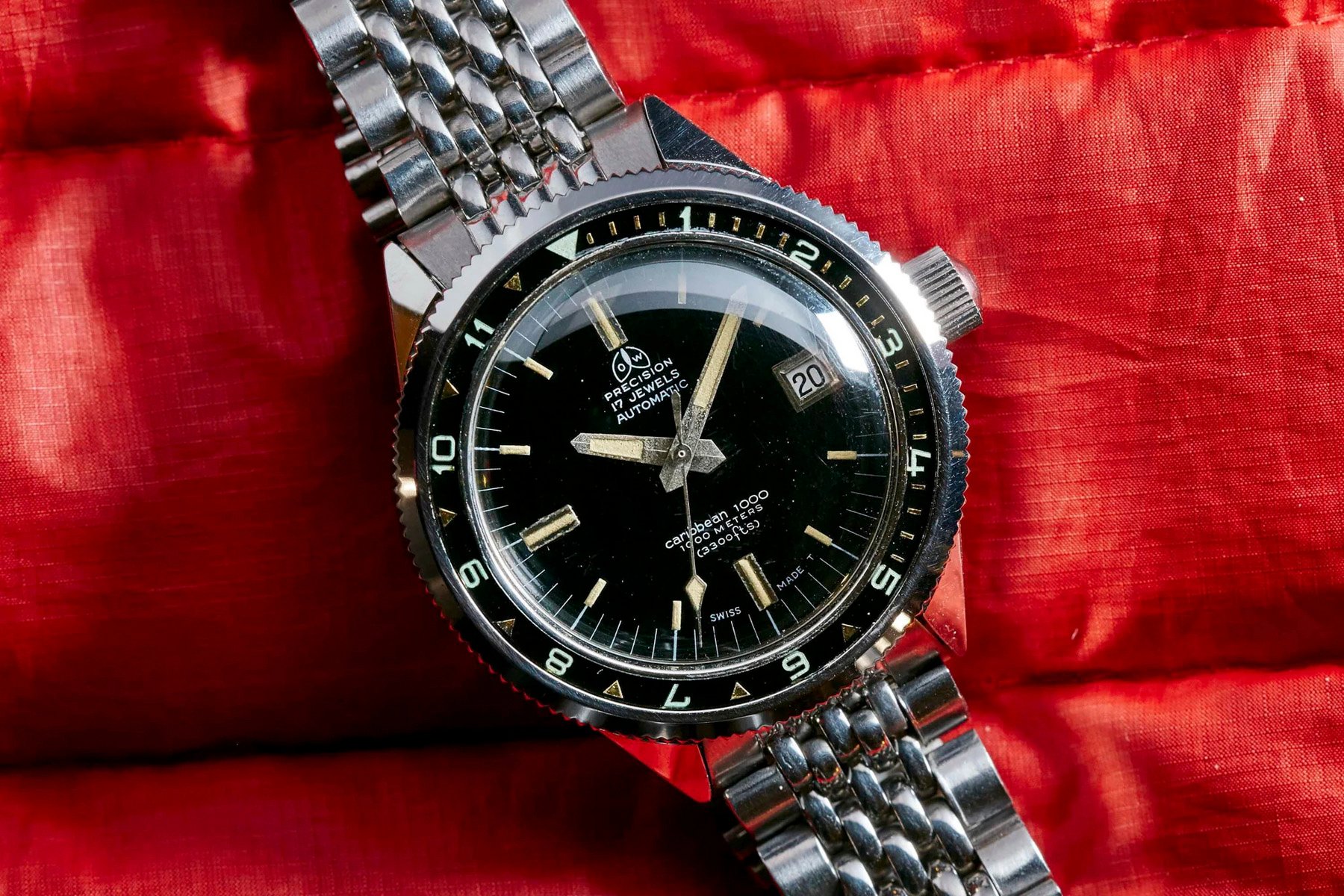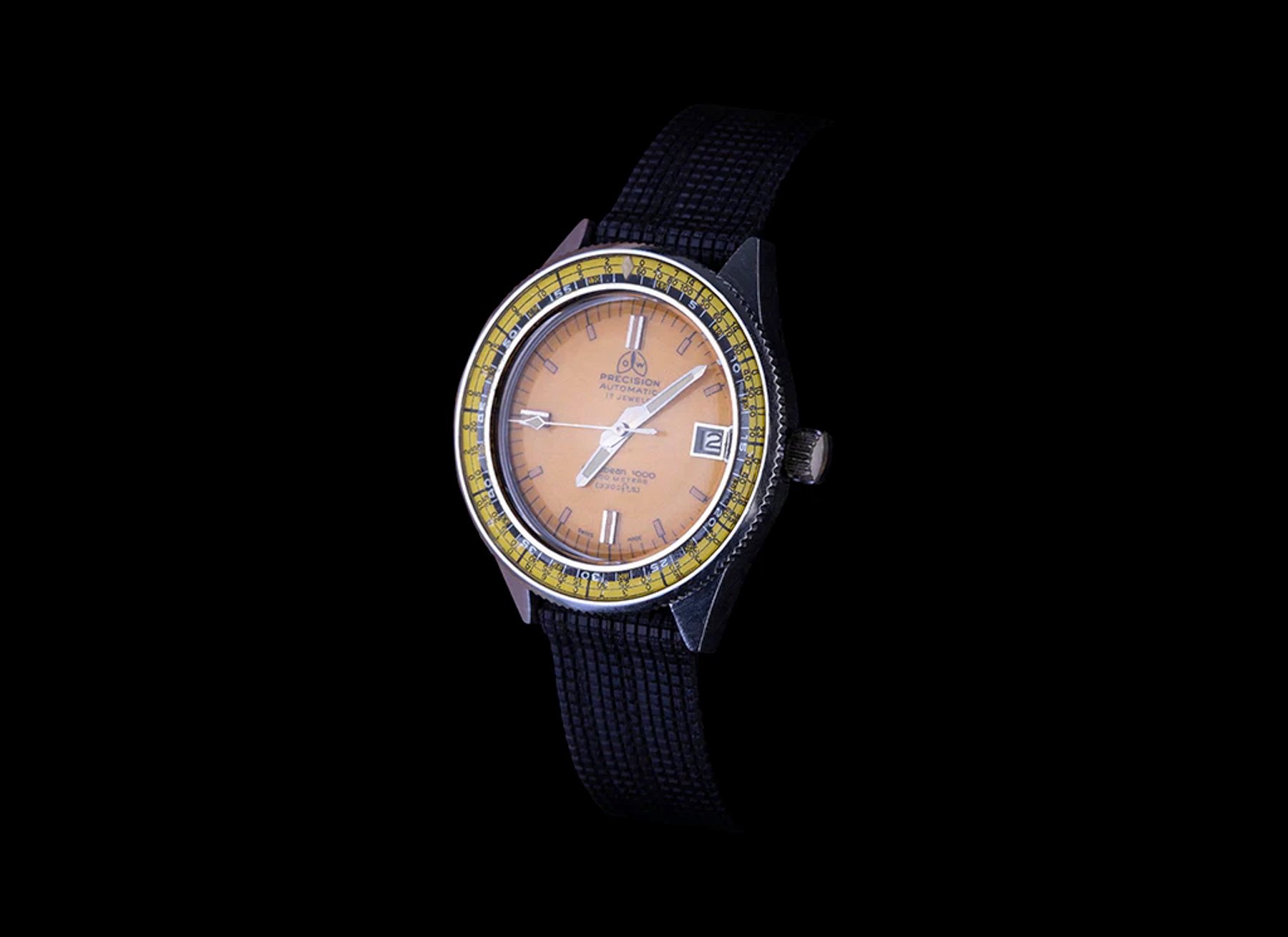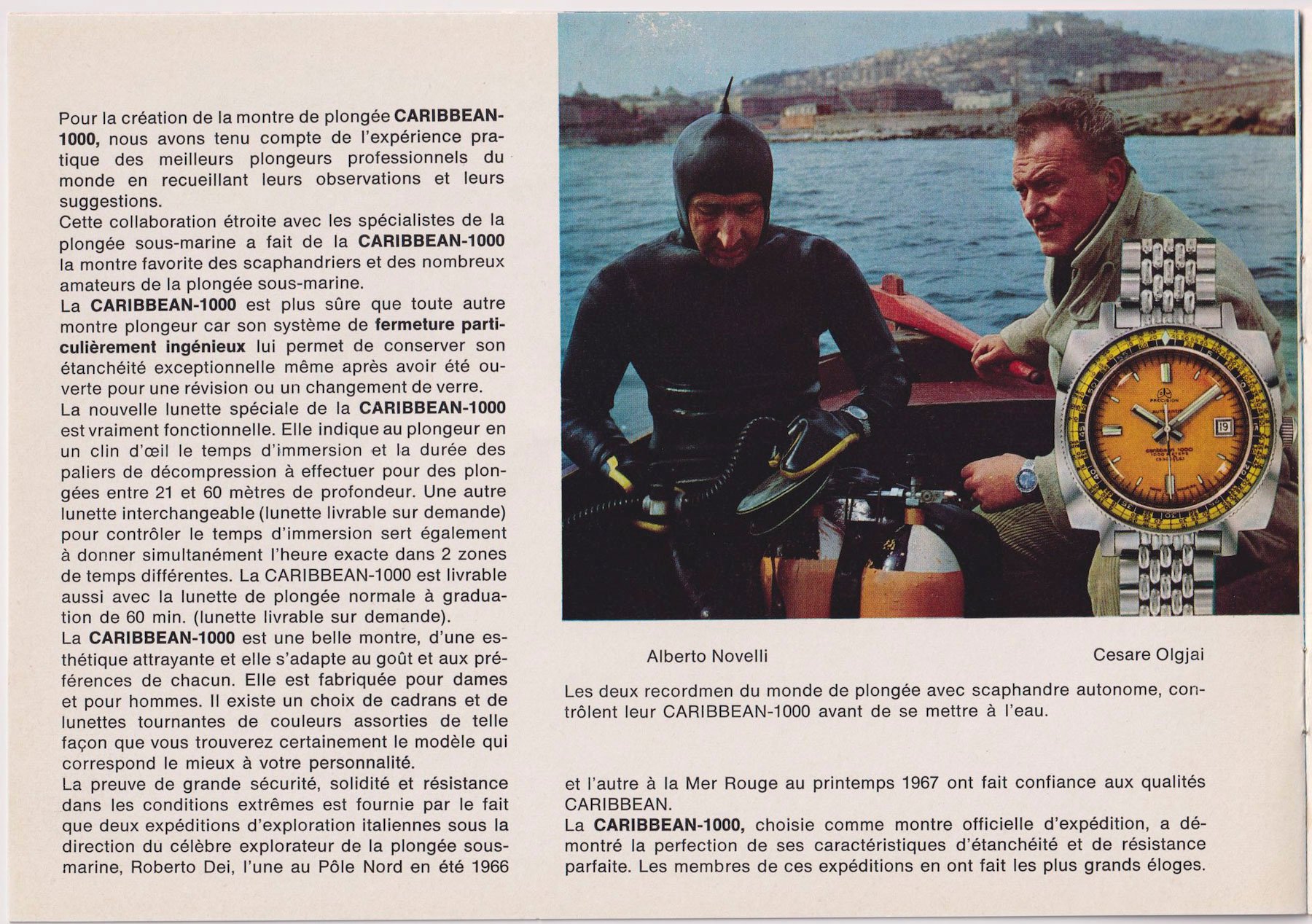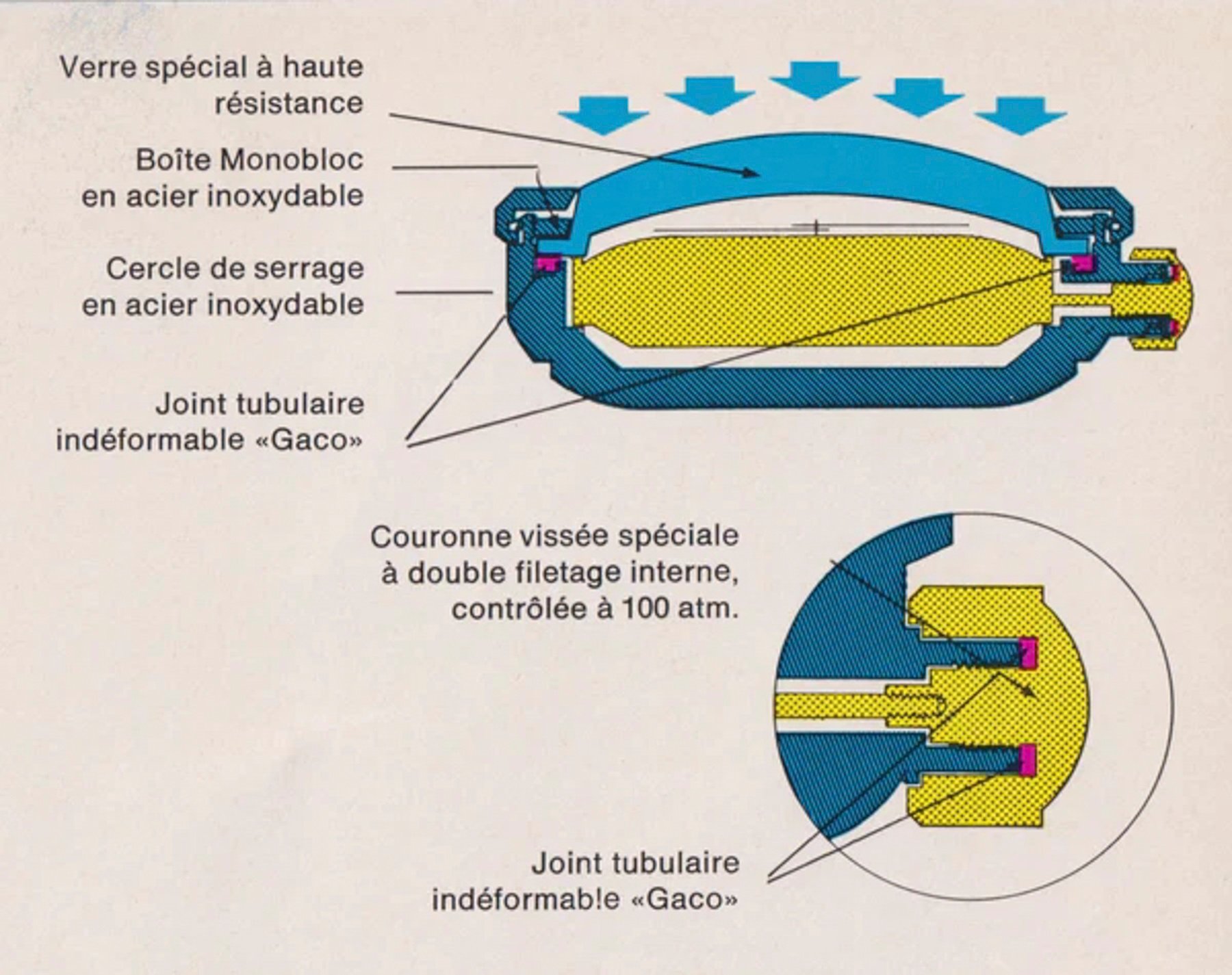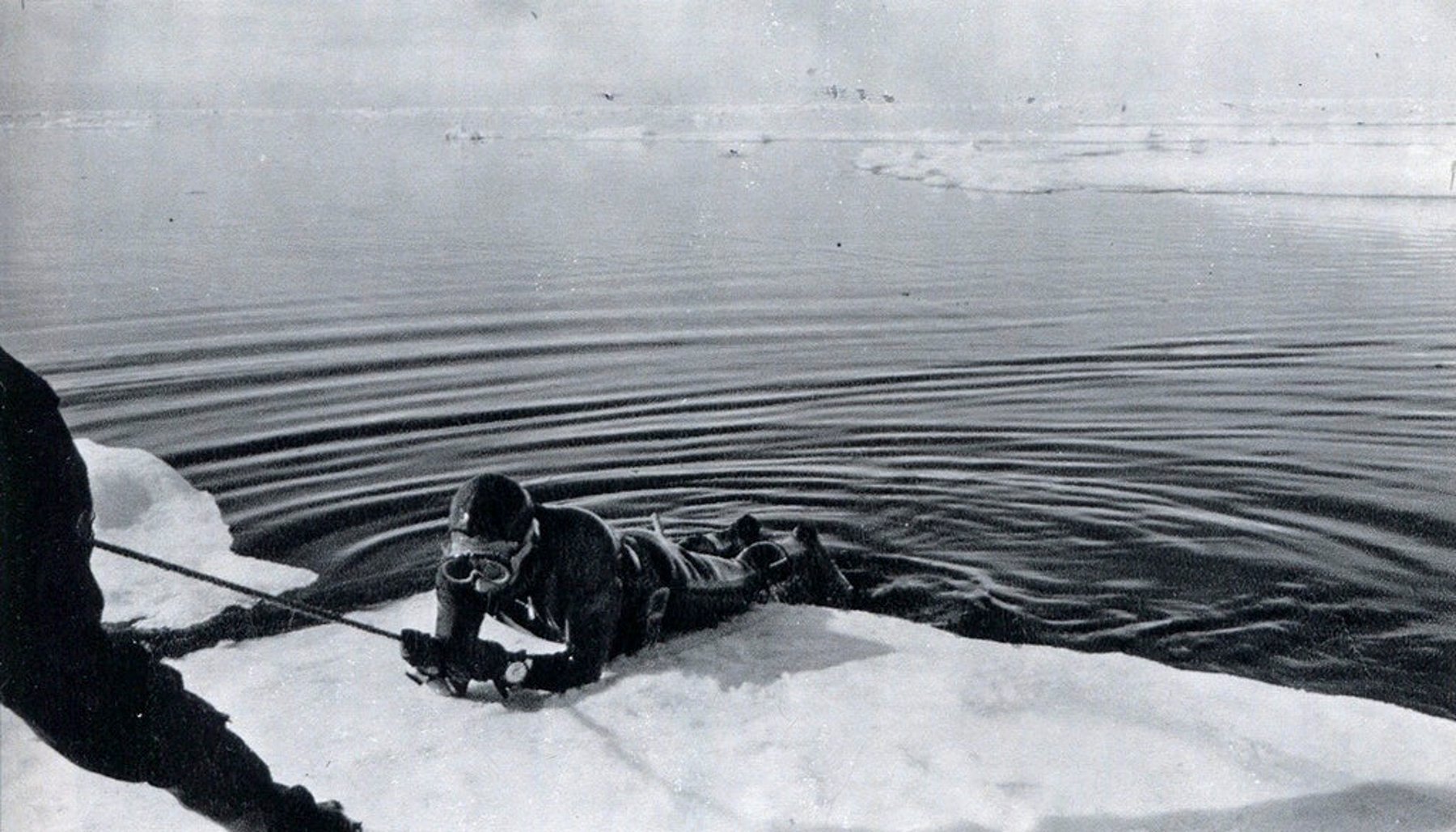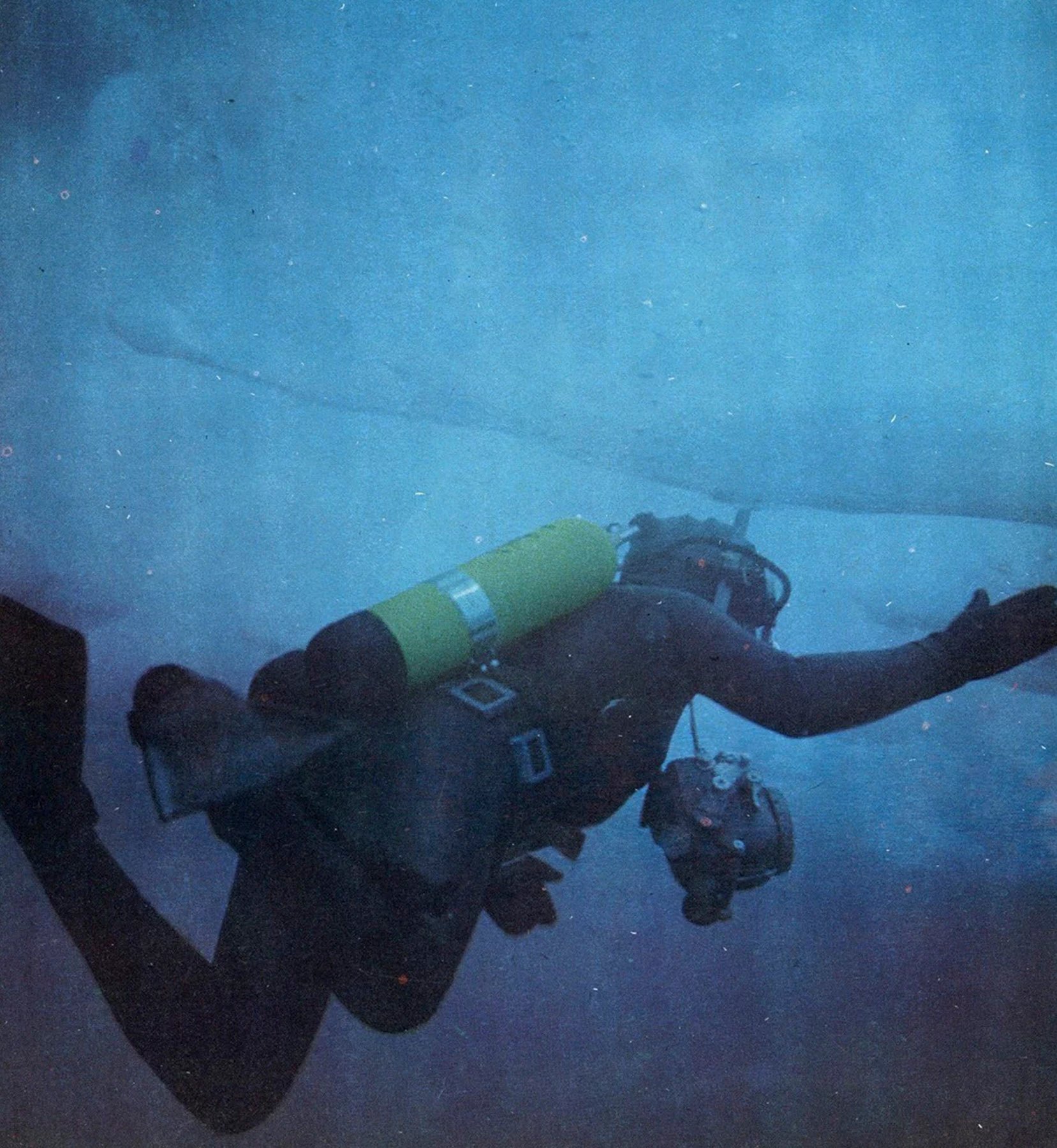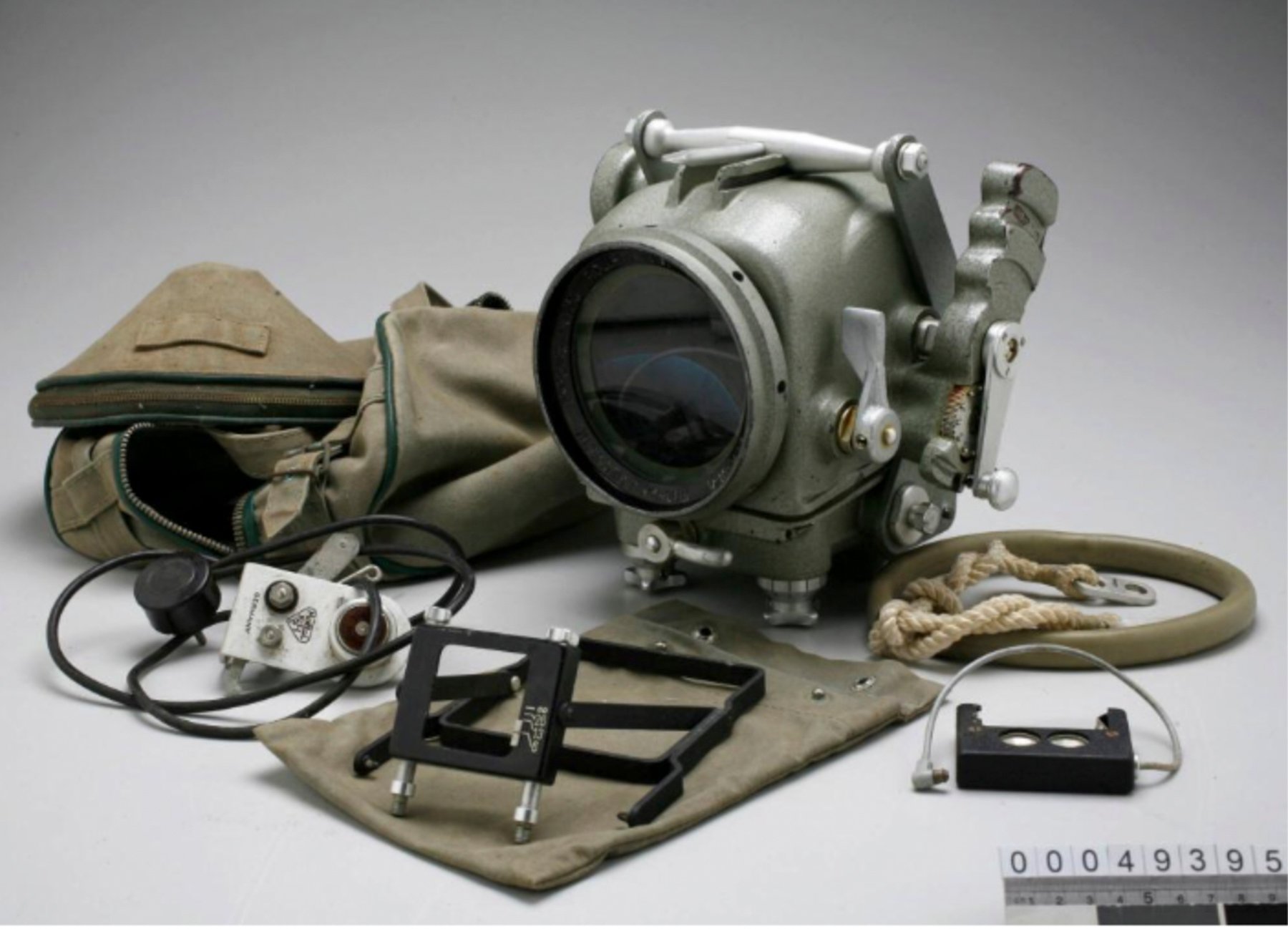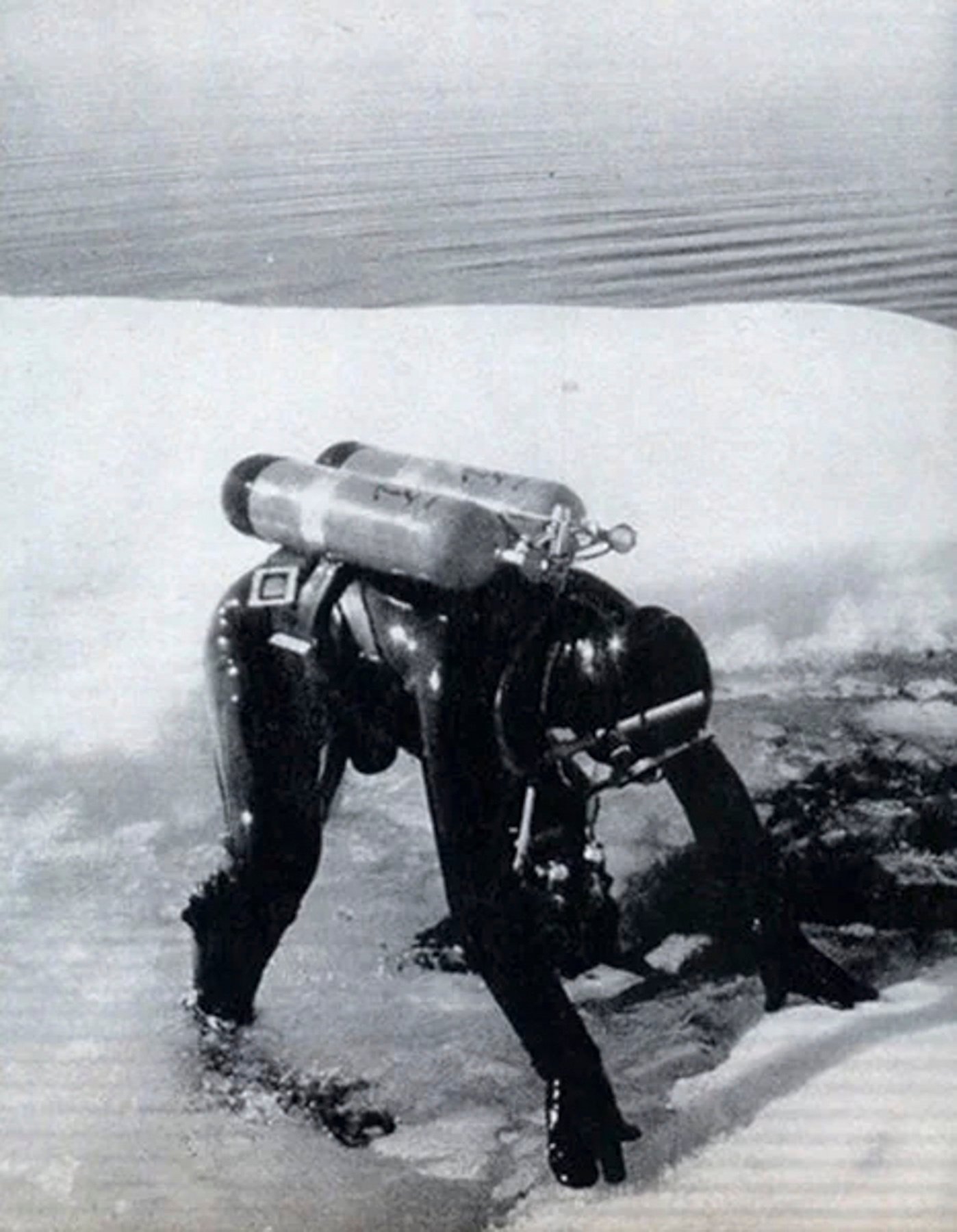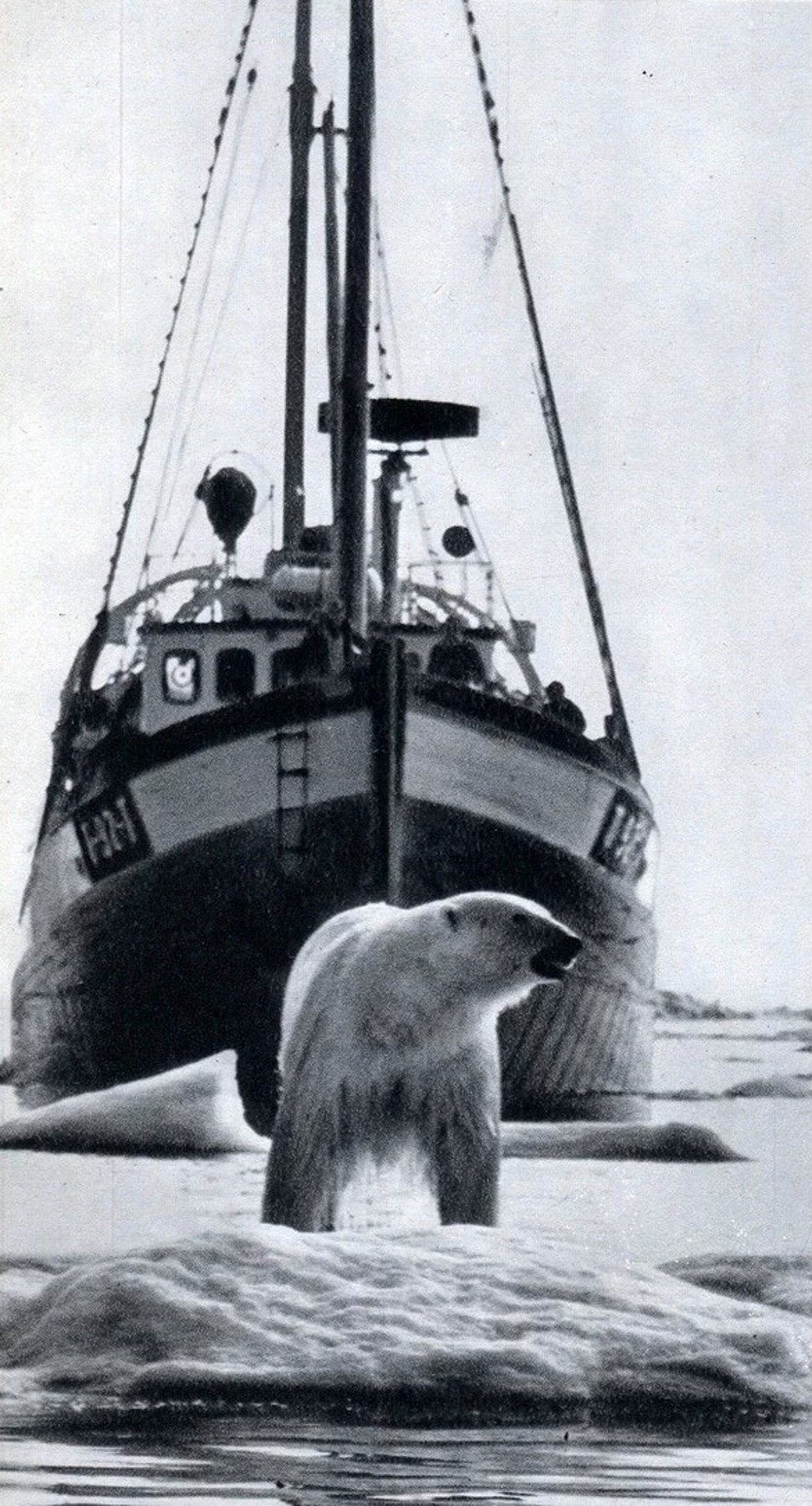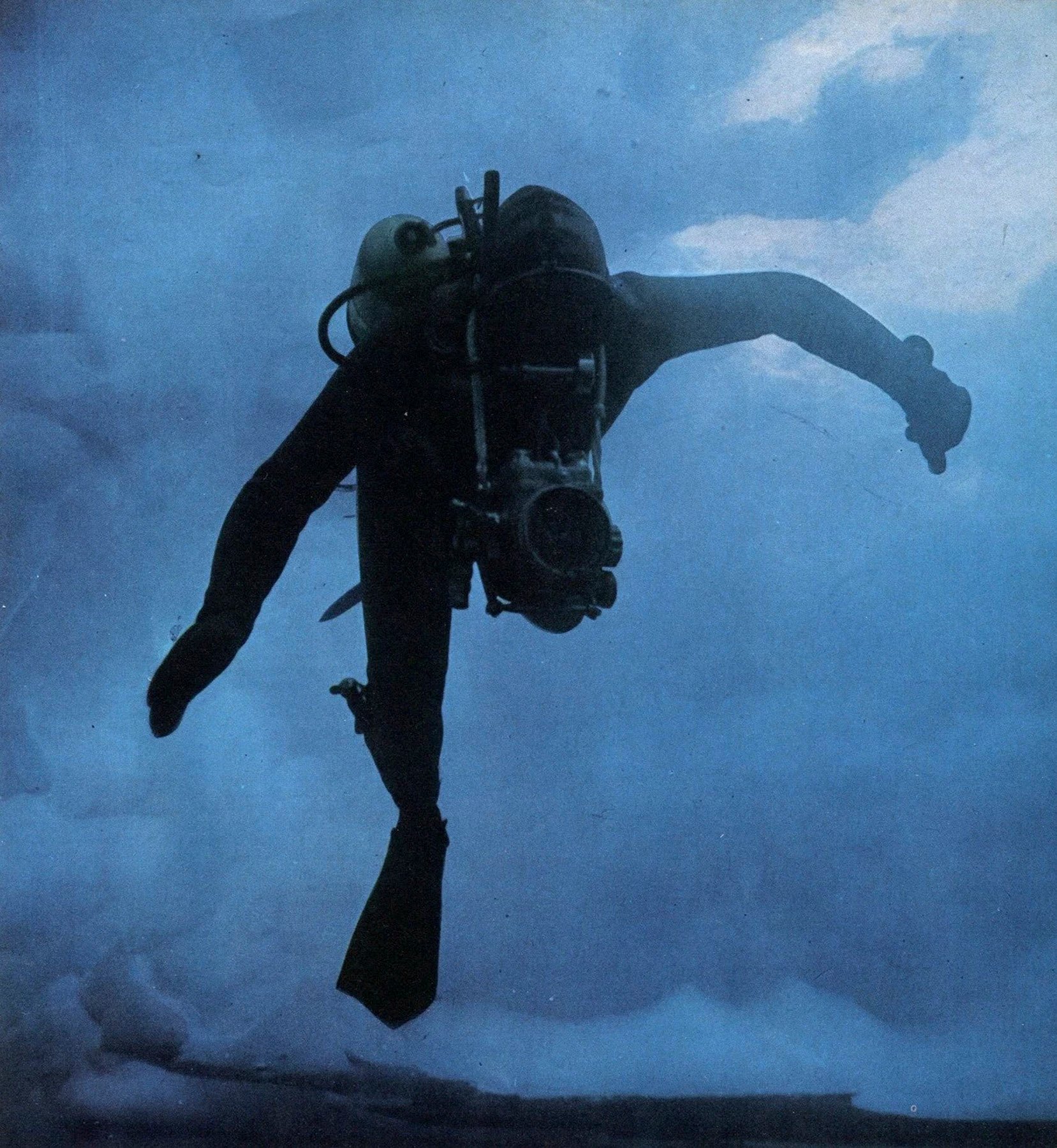How Ollech & Wajs Watches Contributed To A 1960s Arctic Diving Expedition
Ollech & Wajs is a brand that is not covered all that often. There is much to like, though, when one starts to investigate the brand’s history as well as its current offerings. Indeed, it is a brand that resonates with me. Something about Ollech & Wajs’s no-nonsense tool-watch designs and rich past makes for a compelling mix.
The company has a good history of producing tool watches that were often loved by soldiers, divers, and adventurers. I recently reviewed the C-1000 A, a modern rendition of the classic Caribbean 1000 dive watch.
The brand was founded in 1956 by Joseph Ollech and Albert Wajs. It’s incredible to think that just eight years later, in 1964, Ollech & Wajs would go on to introduce the Caribbean 1000. This was a watch that had a certified depth rating of 1,000 meters.
The Ollech & Wajs Caribbean 1000
Ollech & Wajs’s modern designs haven’t always hit hard with me. Something about the handsets seemed a little obtuse at times. Then, recently, the brand released an homage to its original over-specced dive watch, the Caribbean 1000.
When it debuted in 1964, the Caribbean 1000 had a monobloc case that was able to go 700 meters (!) deeper than the Rolex Submariner or Omega Seamaster 300. Of course, both Rolex and Omega would introduce their deep divers not long after with the Sea-Dweller (1967) and PloProf (1971). It should also be noted that Doxa had the Sub 300T Conquistador, which had a helium escape valve, in 1969. The design was a bit of a coup for plucky Ollech & Wajs.
A joint effort between Jenny and Ollech & Wajs
As the name suggests, the Caribbean 1000 was a dive watch capable of withstanding water pressure to 1,000 meters. This was not technically the first watch to achieve the feat, though, as that honor goes to the Jenny Caribbean (1963). As you can see in some of the advertisements of the Ollech & Wajs of the era, the Jenny fish logo is present. Ollech & Wajs teamed up with Jenny, using the reference 702 case for the Caribbean.
These were not particularly well-known watch companies at the time. However, they worked alongside each other to manufacture a monobloc case capable of withstanding pressure to a full kilometer underwater. Ollech & Wajs secured the reference 702 case under license to produce the Caribbean 1000. These early watches housed an ETA 2452 automatic caliber and a black dial front-loaded into the case. They also had a 5mm domed acrylic crystal. Jenny, it should be stated, is the current owner of Doxa, so it is still quite an important family-owned player in the Swiss watch market.
Italian divers decide to go to the Arctic
This incredibly rugged dive watch was a fitting choice, then, for hardcore early 1960s adventurers who wanted something with a bit of extra technical capability. One such adventurer was the Italian underwater photographer Roberto Dei. He had already made a name for himself in the diving community with his groundbreaking approaches to underwater film photography. He was commonly featured in the Italian dive publication Mondo Sommerso.
The purpose of the expedition was to photograph polar bears in their natural environment and assess the physical effects of the Arctic waters on divers. All the divers had at their disposal was regular-production scuba equipment.
The Italian expedition
The reasons for taking the Ollech & Wajs Caribbean 1000 on this difficult expedition are unknown, but it makes sense that divers would want the most robust tool available to them in these conditions. A 1,000m-rated dive watch must have sounded like a groundbreaking technical achievement to the team at the time. An additional technical challenge that the watch would encounter was the sub-zero temperatures, which can wreak havoc on gaskets and seals. Thankfully, no reports of water ingress into the watches were ever reported.
Roberto Dei had dived in difficult conditions before, but he’d done nothing this dangerous. His colder dives had included lakes in the north of Italy, which can have ice melt. The expedition traveled to the test sites aboard a specialized icebreaker vessel. Dei took with him two Rolleimarin cameras encased in immense housings, allowing for underwater photography. They are wonderful contraptions, and you can see an example of one above.
The experience of scuba diving in the Arctic
In an account, Dei recalled his experience plunging into the dark, freezing ocean. He recounted his concern about the effect the freezing ocean would have on his internal organs. It was a well-known fact that the cold waters of the Arctic could quickly turn deadly. A study by the Central Intelligence Agency had estimated that someone exposed to Arctic waters could perish in less than two minutes if not wearing appropriate protective equipment.
Dei was diving in not much more than two 5mm neoprene wetsuits stacked on top of one another, a somewhat crude but effective means of providing extra warmth in the extreme environment. In his account, Dei notes that he was not surprised by how dark it was beneath the surface of the ice. In different areas, the pack ice was more than five meters thick, so it acted like a giant obstacle to any light penetrating beneath the water’s surface. Where the pack ice allowed for the penetration of sunlight, Dei said it would come through like the “shards of light flooding into a beautiful cathedral.”
The danger of polar bears
Apparently, the Ollech & Wajs Caribbean 1000 came out of the expedition unscathed. It had helped keep the divers safe as they had to use the watches to make sure they’d only stay under for a maximum of 28 minutes. This had been established as the absolute limit before because any longer would increase the chances of frostbite and the confusion associated with hypothermia, an enormous risk in a technical pursuit like diving. Within 20 minutes of starting his dive, Dei could no longer feel his hands and was experiencing terrible tooth pain. He surfaced because of the numbness in his extremities, creating the risk of hypothermia.
According to Dei, polar bears were also a significant danger to the expedition members. Divers waddling to the water’s edge with their black neoprene suits looked a little like seals and sometimes attracted unwanted attention. Dei remembers seeing polar bears peering down at the divers from above the ice pack while he was diving underneath.
Concluding thoughts
The Italians returned to Europe from the North Pole in August. Dei had taken a remarkable series of photographs, including of the polar bears. As part of the expedition, Dei had been asked to provide a log of how the team’s watches had performed during the expedition. This included whether they were adversely affected by the cold waters. Though we don’t know for sure, it seems likely that Ollech & Wajs must have supplied several watches if this sort of data was being collected. According to Ollech & Wajs, the expedition members were happy with their timepieces.
It’s cool to make note of some of these lesser-known stories in the watch world. What do you think, Fratelli? Are there any brands or particular watch backstories you’d be interested in reading about? Let us know in the comments.

